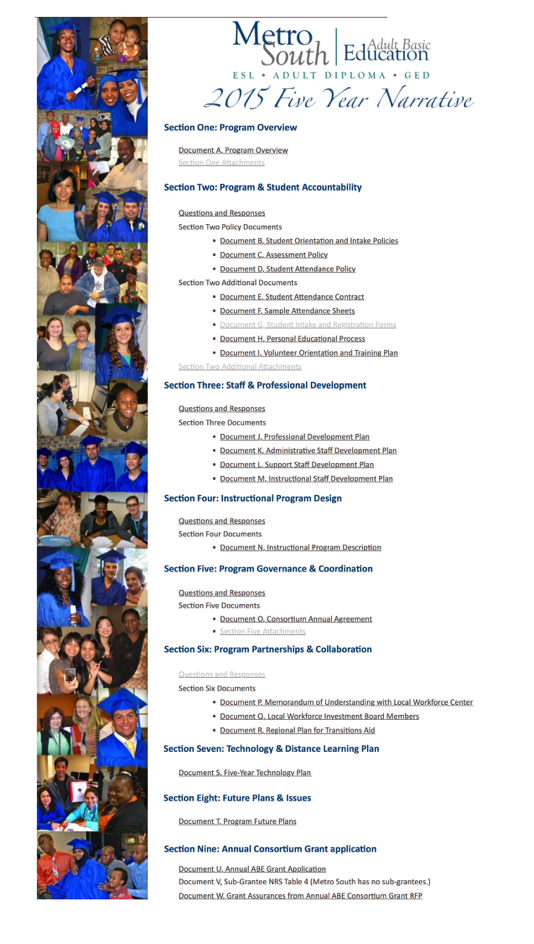
This was particularly true with a required document, the Personal Educational Plan (PEP). Programs are required to have a PEP for each student. For us, PEP was a process, not a piece of paper. We had many discussions about what to do with our PEP process. Should we create a document that we don't actually use? Should we say we do something that we don't actually do, because we perceived that MDE expected this of us?
In the end, we chose to document our process. We perform all of the steps of a PEP for our students, but don't actually create a document called a PEP. We demonstrated how our process works for our students, within the unique framework of our programs.
The Team: Our narrative team for both 2010 and 2015 was composed of largely the same group. Program leadership and office staff did most of the work, and involved other individuals as necessary. For each of the two narratives we began the work in October and sumbitted the narratives to MDE in late May. Meetings were held most frequently between February and April.
My Role: I had previously written the technology section of our 2005 narrative. In 2010, our Director was mulling the idea of bringing in a technical writer. We wanted our narrative to feel as though it was written in one style, with one consistent voice. I voluntered to do the writing. This evolved into leading most of our meetings, designing our format and presentation, and actually assembling the binders.
In 2015, I shared the leadership of our narrative team with Gina Carpenter, our Alternative Educational Services Coordinator. I did most of the writing, once again. For 2015, we decided to do an online narrative rather than on paper. I worked with our marketing team, creating a visual theme for the website.
One of the challenges in 2015 was that part of our team harbored some misconceptions of how our program worked, creating an inaccurate representation. This was a delicate situation in which our head clerk and I re-wrote their work, while helping them to understand why we were doing this.
Outcomes: For both submissions, MDE's team of reviewers was extremely pleased with both our presentation and our content. The review team has representatives from MDE's ABE office and several ABE program coordinators from around the the state.
The format we used in 2010 was adopted as MDE's new model for future narratives.
Our 2015 narrative was also selected as an example for future narratives. We used a combination of Google Docs and Google Drive to present our written work and attachments.
Both narratives were accepted by MDE with minimal revisions. Our 2010 narrative needed revision in how we documented our community partnerships and professional development. We incorporated this experience into our 2015 narrative, which required no revisions after submission.
Values and Ethics of Leadership: Creating Metro South ABE's 2010 and 2015 Program Narratives
The Challenge: Adult basic education programs are required to submit a comprehensive program narrative to MDE every five years. The narrative documents every aspect of an ABE program. Program design, curriculum, professional development, community partnerships and marketing, technology plans, and school policies are all covered. This is a large, time-intensive project. Our 2010 narrative resulted in a 2-inch thick binder, with over thirty page of written work, supporting attachments, and sample artifacts.
MDE provides a handful of example narratives. There is a temptation to closely follow these examples. At times in our work, there was also the temptation to misrepresent our policies in a way that would be more in-line with what we perceived to be MDE's desires. The ethical challenge here was to present our programs in an accurate and transparent way.